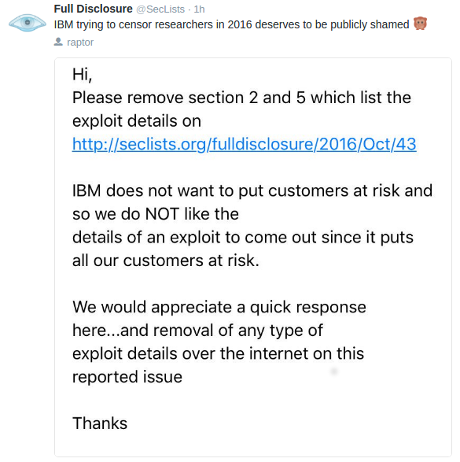To efficiently use law enforcement resources against threats to civil order, the police must recognize the difference between an actual jihadist and an armchair jihadist.
An armchair jihadist is one that talks a good game, dreams of raining fire and death on infidels, etc., but in truth, is the Walter Mitty of terrorism.
Unfortunately, law enforcement disproportionately captures armchair jihadists, for example, the arrest of Samata Ullah, who was charged in part with possession of:
…a book about guided missiles and a PDF version of a book about advanced missile guidance and control for a purpose connected with the commission, preparation or instigation of terrorism”
….
Admitting the romanticism of building one’s own arsenal, how successful do you think an individual or even a large group of individuals would be at building and testing a guided missile?
Here’s a broad outline of the major steps to building a laser guided missile:
The Manufacturing Process
Constructing the body and attaching the fins
1 The steel or aluminum body is die cast in halves. Die casting involves pouring molten metal into a steel die of the desired shape and letting the metal harden. As it cools, the metal assumes the same shape as the die. At this time, an optional chromium coating can be applied to the interior surfaces of the halves that correspond to a completed missile’s cavity. The halves are then welded together, and nozzles are added at the tail end of the body after it has been welded.
2 Moveable fins are now added at predetermined points along the missile body. The fins can be attached to mechanical joints that are then welded to the outside of the body, or they can be inserted into recesses purposely milled into the body.
Casting the propellant
3 The propellant must be carefully applied to the missile cavity in order to ensure a uniform coating, as any irregularities will result in an unreliable burning rate, which in turn detracts from the performance of the missile. The best means of achieving a uniform coating is to apply the propellant by using centrifugal force. This application, called casting, is done in an industrial centrifuge that is well-shielded and situated in an isolated location as a precaution against fire or explosion.
Assembling the guidance system
4 The principal laser components—the photo detecting sensor and optical filters—are assembled in a series of operations that are separate from the rest of the missile’s construction. Circuits that support the laser system are then soldered onto pre-printed boards; extra attention is given to optical materials at this time to protect them from excessive heat, as this can alter the wavelength of light that the missile will be able to detect. The assembled laser subsystem is now set aside pending final assembly. The circuit boards for the electronics suite are also assembled independently from the rest of the missile. If called for by the design, microchips are added to the boards at this time.
5 The guidance system (laser components plus the electronics suite) can now be integrated by linking the requisite circuit boards and inserting the entire assembly into the missile body through an access panel. The missile’s control surfaces are then linked with the guidance system by a series of relay wires, also entered into the missile body via access panels. The photo detecting sensor and its housing, however, are added at this point only for beam riding missiles, in which case the housing is carefully bolted to the exterior diameter of the missile near its rear, facing backward to interpret the laser signals from the parent aircraft.
Final assembly
6 Insertion of the warhead constitutes the final assembly phase of guided missile construction. Great care must be exercised during this process, as mistakes can lead to catastrophic accidents. Simple fastening techniques such as bolting or riveting serve to attach the warhead without risking safety hazards. For guidance systems that home-in on reflected laser light, the photo detecting sensor (in its housing) is bolted into place at the tip of the warhead. On completion of this final phase of assembly, the manufacturer has successfully constructed on of the most complicated, sophisticated, and potentially dangerous pieces of hardware in use today.
Quality Control
Each important component is subjected to rigorous quality control tests prior to assembly. First, the propellant must pass a test in which examiners ignite a sample of the propellant under conditions simulating the flight of a missile. The next test is a wind tunnel exercise involving a model of the missile body. This test evaluates the air flow around the missile during its flight. Additionally, a few missiles set aside for test purposes are fired to test flight characteristics. Further work involves putting the electronics suite through a series of tests to determine the speed and accuracy with which commands get passed along to the missile’s control surfaces. Then the laser components are tested for reliability, and a test beam is fired to allow examiners to record the photo detecting sensor’s ability to “read” the proper wavelength. Finally, a set number of completed guided missiles are test fired from aircraft or helicopters on ranges studded with practice targets.
Did Samata Ullah have the expertise and/or access to the expertise or manufacturing capability for any of those steps?
Moreover, could Samata Ullah have tested and developed a guided missile without someone noticing?
Possession of first principle reading materials, such as chemistry, rocket, missile, etc., manuals or guides is a clear sign an alleged jihadist is an armchair jihadist.
Another sign of an armchair jihadist, along with the possession of such reading materials, is their failure to obtain explosives, weapons, etc., in an effective way.
The United States, via the CIA and the US military, routinely distributes explosives and weapons around the world to various factions.
A serious jihadist need only travel to well known locations and get in line for explosives, RPGs (rocket-propelled grenades), mortars, etc.
Does the weapon in this photo look homemade?

Of course not! Anyone with a passport and a little imagination can possess a wide variety of harmful devices.
But then, they are not an armchair jihadist.
DIY missile/explosive reading clubs of jihadists are not threats to the public. Manufacturing of explosives and missiles are difficult and dangerous, tasks best left to professionals. They are more dangerous to each other than the general public.
When allocating law enforcement resources, remember that the only thing easier to acquire than weapons is possibly marijuana. Anyone planning on building weapons can be ignored as an armchair jihadist.
In the United States and the United Kingdom, law enforcement resources would be better spent in the pursuit of wealthy and governmental pedophiles.
PS: I started to edit the steps for building a guided missile for length but the description highlights the absurdity of the charges in question. Melting steel or aluminum and pouring it into a metal die? Please, that’s not a backyard activity. Neither is pouring molten rocket fuel using a centrifuge.






